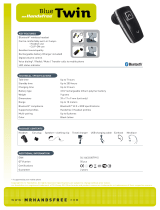ii
Contents
Basic functions ........................................................................................................................24
Switching the handset on/off ……………………………………………………………24
Key lock / Phone lock ……………………………………………………………………24
Switching hands-free operation on/off ……………………………………………………24
Acknowledging an appointment/alarm clock ……………………………………………25
Adjusting the volume of the earpiece during the call ……………………………………25
Switching the ringer on/off ………………………………………………………………25
Switching ringer off at call ………………………………………………………………25
Illumination ……………………………………………………………………………26
Changing the brightness/contrast of the display …………………………………………26
Muting the handset ……………………………………………………………………26
Automatic hide / Info window ……………………………………………………………27
Event window and "Info"- Menu …………………………………………………………27
Vibration alarm (620d, 630d only) ………………………………………………………27
Configuring your personal directory ………………………………………………………27
Editing lists ……………………………………………………………………………28
Using the Bluetooth® headset (Aastra 620d, 630d) ………………………………………29
Registration …………………………………………………………………………29
Telephoning via the Bluetooth headset…………………………………………………30
Special key (Hotkey) /VIP list (Aastra 620d, 630d) …………………………………………30
VIP list (Aastra 610d) ……………………………………………………………………30
Special functions (Aastra 630d only)………………………………………………………31
SOS …………………………………………………………………………………31
"Mandown" …………………………………………………………………………31
Telephoning............................................................................................................................33
Answering a call…………………………………………………………………………33
Making internal / external calls …………………………………………………………34
Direct dial ……………………………………………………………………………34
Predial ………………………………………………………………………………34
Calling from the Redial list ………………………………………………………………34
Calling from your personal Phone book …………………………………………………35
Calling from the system directory (Central directory)* ……………………………………35
Calling from the Caller lists ………………………………………………………………35
Ending calls ……………………………………………………………………………36
Multiple connections ……………………………………………………………………37
During a call …. ………………………………………………………………………37
Callback………………………………………………………………………………37
Call forwarding ………………………………………………………………………38
Devices menu..........................................................................................................................39
Notes on the display symbols in the menu………………………………………………39
Overview ………………………………………………………………………………39
Info …………………………………………………………………………………39
Active features ………………………………………………………………………39
Phone book …………………………………………………………………………40
Time/Alarms ………………………………………………………………………40
Audio ………………………………………………………………………………40




















